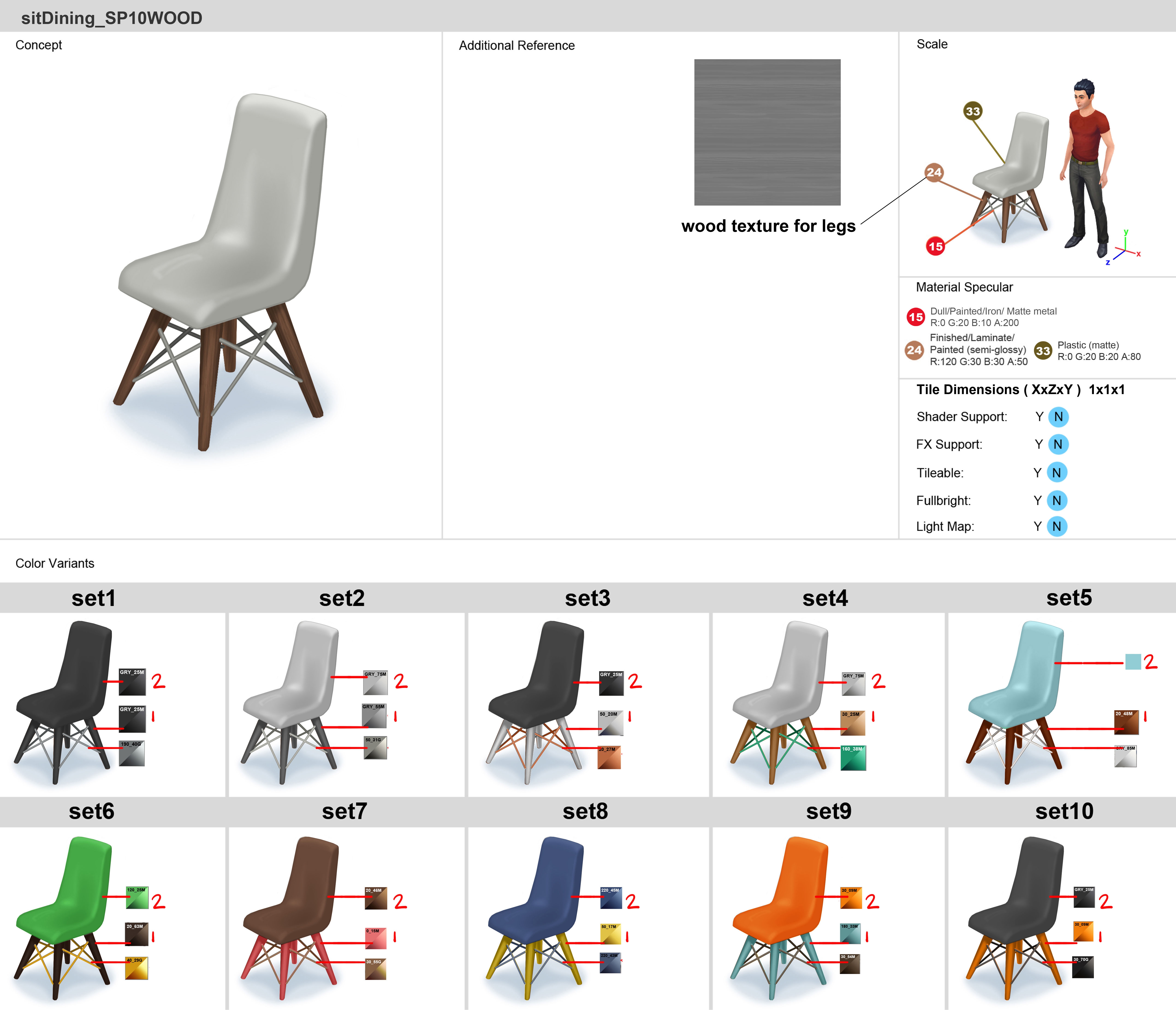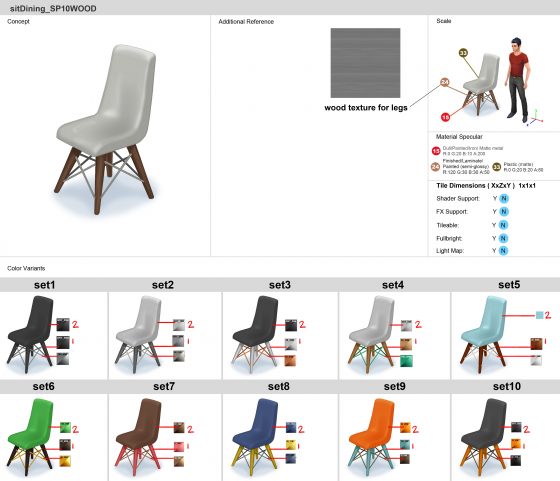Nu de winnende voorwerpen uit De Sims 4 Wasgoed Accessoires bekend zijn, heeft SimGuruGraham in een nieuwe post uitgelegd hoe deze voorwerpen nu van concept naar in-game voorwerpen gaan. Voor veel makers van Custom Content zal het bekend voorkomen, maar voor buitenstanders kan het interessant zijn om een keer te lezen. Het begin van de post heb ik hieronder geplaatst, de rest kun je lezen op het internationale forum.
With our objects for this upcoming Stuff Pack now selected, our concept artists have started work on creating object guides. Whereas the original concept art provides a basic look at each asset we’ll create, a guide ensures that nothing is left open to interpretation for the modeling artist. This includes showing the object from different perspectives, and visualizing the scale of an object in contrast to the height of a Sim. It answers all construction questions, such as… Should the object tile seamlessly if it’s placed next to itself? What size should the object’s footprint be? Does the object emit any light or VFX? How shiny should various surfaces of the object be? Perhaps most importantly to players, the guide shows every color and pattern variant that the object will have, with each of the color values defined precisely.
Here’s an example of an object guide for a dining chair from The Sims 4 Bowling Night Stuff…
Guides are our concept artist’s final step in the process before we hand the art off to external partners. We have both internal artists who work here as part of the Maxis team, as well as external partners that help flesh out the breadth of catalog content that every pack includes. Our external partners first put together orthogonal drawings, and then go on to create the geometry and texture that the model uses. Our internal artists tend to work on brand new types of objects, while our external partners are given concept art of objects that match a template of something we’ve already created. We accomplish this by creating something we call a “block model”. Block models are the simplest way to represent the different types of objects you see in-game, and they contain key information that every object of the same type must include to function properly. For every object that you see multiples of in-game (beds, bookcases, dining chairs, trash cans, mailboxes, etc), a block model exists that defines its bare necessities.
Meer op forums.TheSims.com

